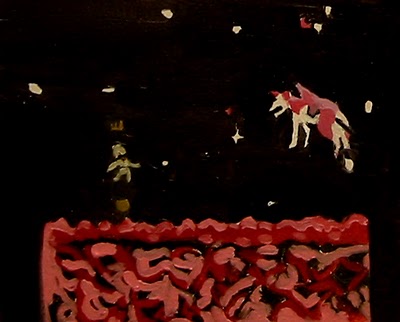Traditional Art Education in a Digital Era

In the ongoing conversation about art education, there’s a prevailing notion that traditional artistic methods are becoming obsolete in a world dominated by digital technologies and digital art. However, traditional arts education not only cultivates fundamental skills but also complements a digital-focused practice.
Traditional art education goes beyond just creating aesthetically pleasing images. It’s about honing essential skills like observation, tactile engagement, and spatial comprehension. There’s a unique quality to working with physical materials that can’t be replicated on a screen. Many of my students, who spend much of their time in front of screens, enjoy stepping away and engaging in hands-on activities like drawing or painting. While I don’t have concrete evidence, there’s something about the tactile connection between our hands and our thoughts that seems to enhance learning, akin to the way our brains retain more information when writing in cursive.
Learning to paint or draw also allows us to connect with the past through art history. Studying classic artworks and techniques deepens our understanding of art’s evolution over time, providing insight into the human experience. Oil paint, for example, maintains its distinctive appearance whether used today or centuries ago, emphasizing the enduring nature of traditional mediums. While digital approaches often aim to mimic real-life materials, there’s a timeless quality inherent in creating with ancient mediums.
Traditional artworks possess a sense of timelessness that transcends fleeting digital trends, that come and go in the blink of an eye. They serve a straightforward purpose: people look at them. While digital displays exist, they often struggle to replicate the rich colors and physical presence of traditional artworks. This begs the question: why try to replicate traditional mediums digitally when the original materials are readily available?
That said, there’s nothing inherently wrong with digital art or beginning one’s artistic journey with a stylus instead of a pencil. However, we shouldn’t overlook the tried-and-true methods that have inspired artists for centuries. One of the biggest challenges my students face is learning to truly see and draw. While AI technology may make this even more challenging in the future, there’s something irreplaceable about the unique mark-making of each artist. Your artistic style, whether in paint or pencil, becomes your signature—a relationship that develops over time through persistent practice and observation.
Ultimately, sitting down with a stack of paper and a pencil fosters the muscle memory needed to develop your artistic voice. In an age where digital tools abound, taking the time to engage with traditional mediums not only honors artistic traditions but also deepens your connection to the creative process. If you’re stuck in front of your computer all day, and you’d like to get your hands dirty, then click the Kontakt link and send me a message. We can get you into one of my classes in no time.


